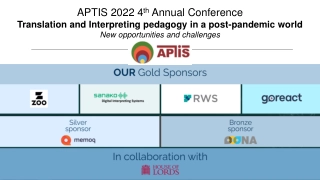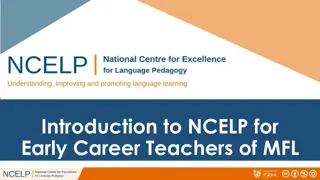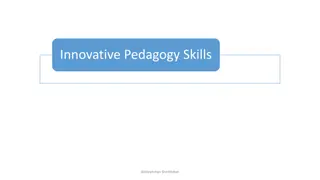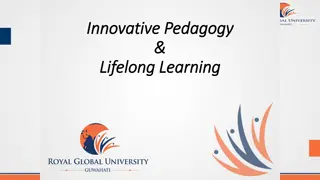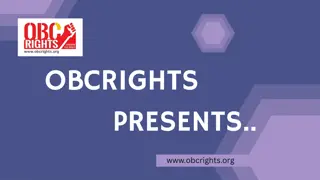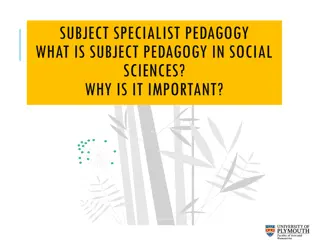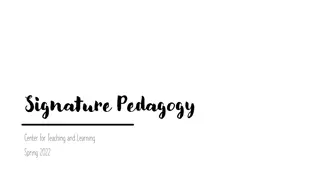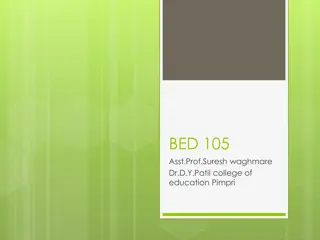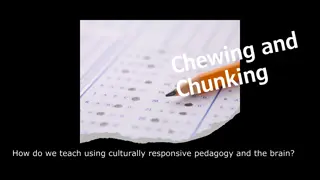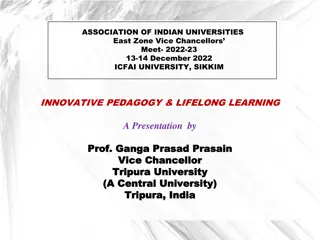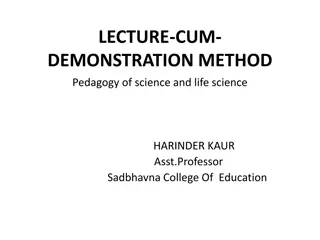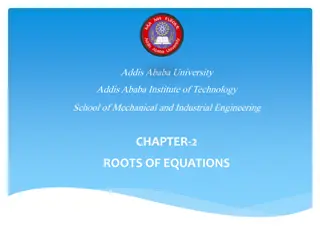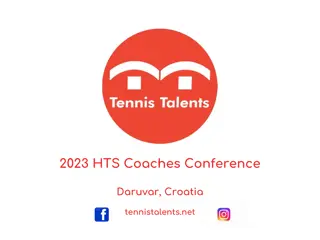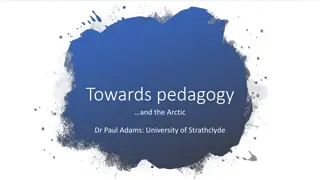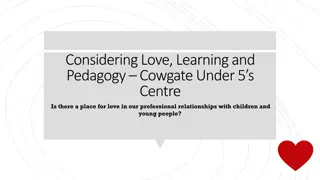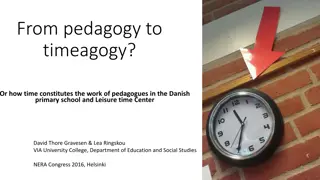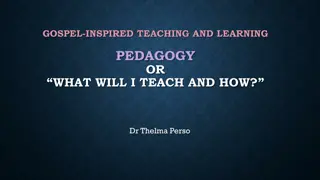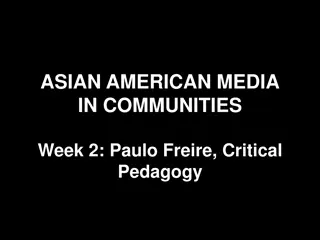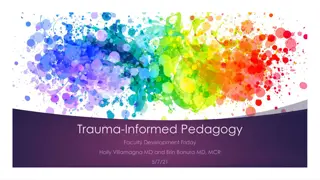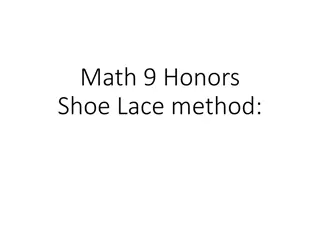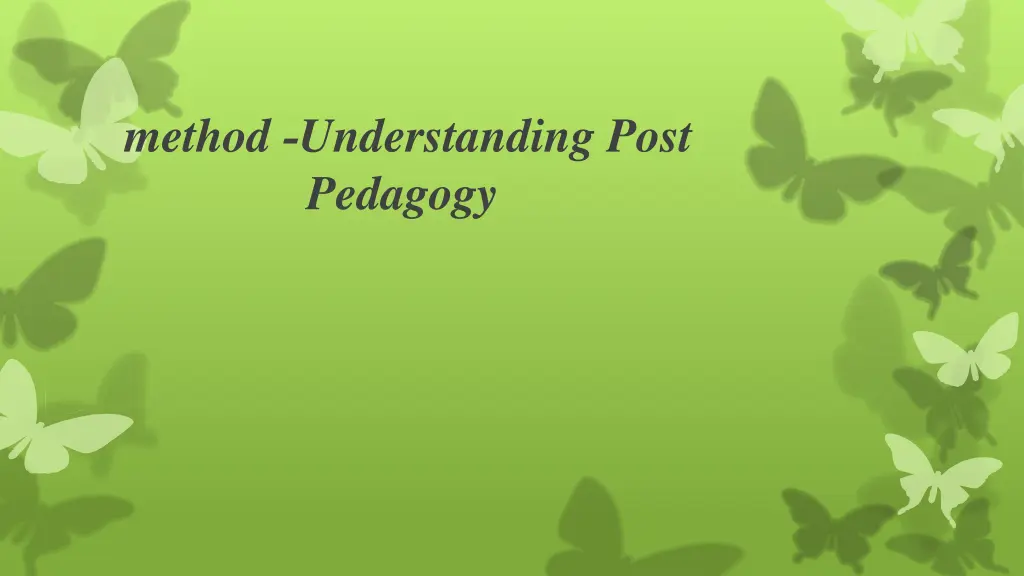
Understanding Language Teaching Methods in Teacher Education Programs
Explore the integral role of language teaching methods in teacher education programs worldwide. Discover the concept of methods and the various language-centered approaches utilized in classroom settings. Gain insights into the theory and practice of language development through conscious effort and structured linguistic exercises.
Download Presentation

Please find below an Image/Link to download the presentation.
The content on the website is provided AS IS for your information and personal use only. It may not be sold, licensed, or shared on other websites without obtaining consent from the author. If you encounter any issues during the download, it is possible that the publisher has removed the file from their server.
You are allowed to download the files provided on this website for personal or commercial use, subject to the condition that they are used lawfully. All files are the property of their respective owners.
The content on the website is provided AS IS for your information and personal use only. It may not be sold, licensed, or shared on other websites without obtaining consent from the author.
E N D
Presentation Transcript
method Understanding Post Pedagogy -
The Concept of Method Theory and Practice of Methods is an integral part of language teacher education programs all over the world survey of 120 teacher education programs for TESOL: Methods course functions as the primary vehicle for the development of basic knowledge and skill in the prospective teacher specific classroom techniques receive the greatest amount of attention and time in the methods courses The three main books deal almost exclusively with specific language teaching methods
The term methods does not refer to what teachers actually do in the classroom; rather, it refers to established methods conceptualized and constructed by experts in the field. The most common methods included in books are : Audiolingual Method Communicative Methods Community Language Learning, Direct Method Grammar-Translation Method Natural Approach Oral Approach Silent Way Situational Language Teaching Suggestopedia Total Physical Response
Note that: These methods are not different paths There is considerable overlap A new method is usually a variant of an existing method To be able to analyse we prefer classify them as: (a) language-centered methods (b) learner-centered methods (c) learning-centered methods
Language-Centered Methods principally concerned with linguistic forms, also called grammatical structures Opportunities for learners to practice preselected, pre-sequenced linguistic structures form-focused exercises language development is largely intentional rather than incidental Language development takes place through conscious effort language learning as a linear, additive process accumulated entities Assumption: preoccupation with form will ultimately lead to a mastery of the target language and that learners can draw from this formal repertoire whenever they wish to communicate in the target language outside the class
In practice: Vocabulary items are carefully selected for their potential use graded from simple to complex teacher s task is to introduce them one at a time There is explicit introduction, analysis, and explanation of linguistic systems
Learner-Centered Methods Concerned with language use and learner needs opportunities for learners to practice preselected, presequenced grammatical structures as well as communicative functions meaning-focused activities are used language development is largely intentional rather than incidental making language learners grammatically accurate and communicatively fluent Assumption: preoccupation with both form and function will ultimately lead to target language mastery and that the learners can make use of both formal and functional repertoire to fulfil their communicative needs outside the class
take into account the learners real-life language use for social interaction or for academic study present necessary linguistic structures in communicative contexts accumulated entities represent structures plus notions and functions Each functional category could be matched with one or more linguistic Forms sequentially presented and systematically explained
Learning-Centered Methods principally concerned with learning opportunities for learners to participate in open-ended meaningful interaction communicative activities or problem-solving tasks Assumption: preoccupation with meaning-making will ultimately lead to grammatical as well as communicative mastery of the language and that learners can learn through the process of communication
language development is considered more incidental than intentional language development is a nonlinear process does not require preselected, pre-sequenced systematic language input requires conditions in which learners can engage in meaningful activities Language is learned when the learner s attention is focused on understanding, saying and doing something with language linguistic systems are too complex to be neatly analysed, explicitly explained, and sequentially presented Rely on insights from research in second language acquisition which can inform the theory and practice
Theoretical principles insights derived from linguistics, second language acquisition, cognitive psychology, information sciences, and other allied disciplines that provide theoretical bases for the study of language, language learning, and language teaching
Classroom procedures teaching and learning techniques indicated by the syllabus designer and/or the materials producer, and adopted/adapted by the teacher and the learner in order to jointly accomplish the goals of language learning and teaching in the classroom
Limitations of the Concept of Method First and foremost, methods are based on idealized concepts geared toward idealized contexts needs, wants, and situations are unpredictably numerous no idealized method can visualize all the variables the conception and construction of methods have been largely guided by a one-size- fits-all, cookie-cutter approach methods tend to wildly drift from one theoretical extreme to the other certain aspects of learning and teaching get overly emphasized while certain others are utterly ignored too inadequate and too limited to satisfactorily explain the complexity of language teaching operations multiple factors such as teacher cognition, learner perception, societal needs, cultural contexts, political exigencies, economic imperatives, and institutional constraints
Conclusion the term method is a label without substance (Clarke, 1983, p. 109) diminished rather than enhanced our understanding of language teaching (Pennycook, 1989, p. 597) language teaching might be better understood and better executed if the concept of method were not to exist at all (Jarvis,1991, p. 295).
Dissatisfaction with Method Studies show clearly: teachers who are trained in and even swear by a particular method do not conform to its theoretical principles and classroom procedures teachers who claim to follow the same method often use different classroom procedures that are not consistent with the adopted method teachers who claim to follow different methods often use same classroom procedures over time, teachers develop and follow a carefully delineated task hierarchy, a weighted sequence of activities not necessarily associated with any established method.
no single perspective on language, no single explanation for learning, and no unitary view of the contributions of language learners will account for what they must grapple with on a daily basis (Larsen-Freeman, 1990, p. 269). That is why teachers rely on their intuitive ability and experiential knowledge And have chosen to be eclectic .
What is wrong with eclecticism? The weakness of the eclectic position is that it offers no criteria according to which we can determine which is the best theory, nor does it provide any principles by which to include or exclude features which form part of existing theories or practices. The choice is left to the individual s intuitive judgment and is, therefore, too broad and too vague to be satisfactory as a theory in its own right. comfort of a context- sensitive professional theory confidence of a fully developed personal theory
Postmethod Condition It includes three interrelated attributes: First search for an alternative to method rather than an alternative method we need to refigure the relationship between the theorizer and the practitioner of language teaching. It empowers practitioners to construct personal theories of practice Looks for enabling practitioners to generate location-specific, classroom-oriented innovative strategies.
Second: the post-method condition signifies teacher autonomy. It recognizes the teachers potential (how to teach + how to act autonomously within the academic and administrative constraints imposed) It promotes the ability of teachers to know how to develop a critical approach in order to selfobserve, self-analyze, and self-evaluate their own teaching practice for effective desired changes
Third: based on pragmatism unlike eclecticism constrained by the conventional It is based on the pragmatics of pedagogy where the relationship between theory and practice, ideas and their actualization, can only be realized within the domain of application, that is, through the immediate activity of teaching (Widdowson, 1990, p. 30). It focuses on how classroom learning can be shaped and reshaped by teachers as a result of selfobservation, self-analysis, and self-evaluation.
To do so.. Teachers need a sense of plausibility. (Prabhu, 1990) peer subjective understanding consultatio n own profession al education experienc e
What is the goal? not whether it implies a good or bad method, but more basically, whether it is active, alive, or operational enough to create a sense of involvement for both the teacher and the student
Postmethod Pedagogy Is a three-dimensional system The Parameter of Particularity The Parameter of Practicality The Parameter of Possibility
The Parameter of Particularity particular group of teachers particular sociocultura l milieu one works for and through particularity at the same time particular group of learners particular institution al context particular set of goals
How? It starts with practicing teachers, either individually or collectively, observing their teaching acts, evaluating their outcomes, identifying problems, finding solutions, and trying them out to see once again what works and what doesn t. Such a continual cycle of observation, reflection, and action is a prerequisite for the development of context-sensitive pedagogic theory and practice.
The Parameter of Practicality a teacher-generated theory of practice no theory of practice can be fully useful unless there is practice
The Parameter of Possibility any pedagogy is implicated in relations of power and dominance recognition of learners and teachers subject-positions Individual identity
practical, and the possible are blurred. The result of such a relationship will vary from context to context depending on what the participants bring to bear on it.
Macrostrategic Framework Macrostrategies Microstrategies
Macrostrategies Defined as: guiding principles derived from historical, theoretical, empirical, and experiential insights related to L2 learning and teaching. theory-neutral & method-neutral a general plan/broad guideline are made operational in the classroom through microstrategies
Maximize learning opportunities: This macrostrategy envisages teaching as a process of creating and utilizing learning opportunities, a process in which teachers strike a balance between their role as managers of teaching acts and their role as mediators of learning acts Minimize perceptual mismatches: This macrostrategy emphasizes the recognition of potential perceptual mismatches between intentions and interpretations of the learner, the teacher, and the teacher educator Facilitate negotiated interaction: This macrostrategy refers to meaningful learner-learner, learner-teacher classroom interaction in which learners are entitled and encouraged to initiate topic and talk, not just react and respond;
Promote learner autonomy: This macrostrategy involves helping learners learn how to learn, equipping them with the means necessary to self-direct and self-monitor their own learning Foster language awareness: This macrostrategy refers to any attempt to draw learners attention to the formal and functional properties of their L2 in order to increase the degree of explicitness required to promote L2 learning; Activate intuitive heuristics(using experience): This macrostrategy highlights the importance of providing rich textual data so that learners can infer and internalize underlying rules governing grammatical usage and communicative use;
Contextualize linguistic input: This macrostrategy highlights how language usage and use are shaped by linguistic, extralinguistic, situational, and extrasituational contexts Integrate language skills: This macrostrategy refers to the need to holistically integrate language skills traditionally separated and sequenced as listening, speaking, reading, and writing Ensure social relevance: This macrostrategy refers to the need for teachers to be sensitive to the societal, political, economic, and educational environment in which L2 learning and teaching take place Raise cultural consciousness: This macrostrategy emphasizes the need to treat learners as cultural informants so that they are encouraged to engage in a process of classroom participation that puts a premium on their power/knowledge.
The Pedagogic Wheel in a systemic relationship supporting one another.

